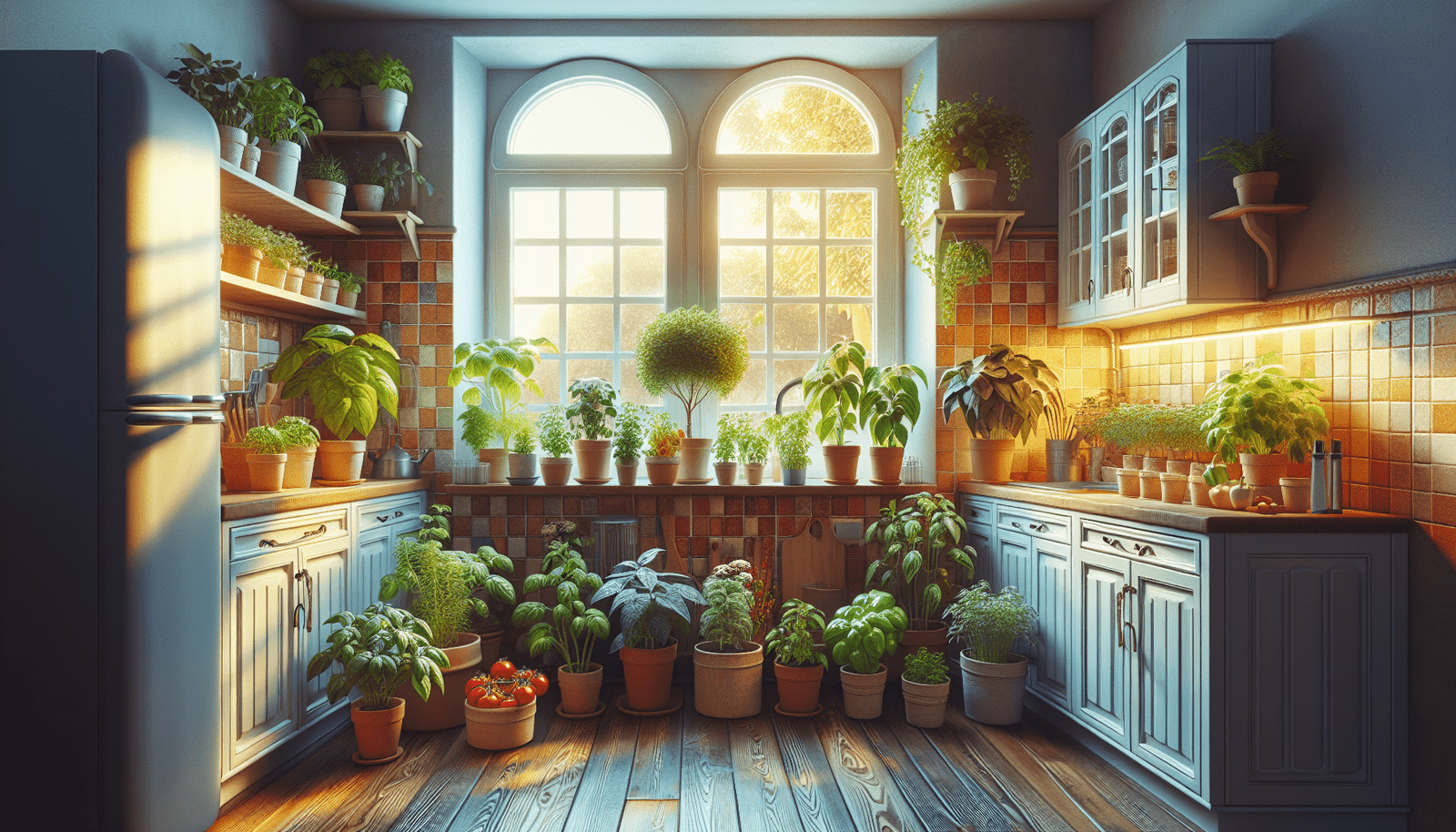Welcome to a beginner’s guide on the best practices for growing an indoor vegetable garden. In this article, we will explore the key steps and tips to help you successfully cultivate a thriving garden right in the comfort of your home. From choosing the right location and containers to proper lighting and watering techniques, we’ve got you covered on everything you need to know to grow your own delicious and nutritious vegetables indoors. Let’s get started on your indoor gardening journey! Have you ever wanted to grow your own vegetables but don’t have the space or suitable outdoor conditions for a traditional garden? Fear not! You can still enjoy the satisfaction of growing your own produce by setting up an indoor vegetable garden. In this article, we will explore the best practices for growing an indoor vegetable garden, providing you with all the information you need to successfully cultivate a thriving indoor garden.

Selecting the Right Vegetables
When it comes to choosing vegetables for your indoor garden, there are a few factors to consider. You’ll want to select vegetables that are well-suited to indoor growing conditions, such as limited space, lower light levels, and controlled temperatures. Some of the best vegetables for indoor gardening include herbs like basil and parsley, leafy greens like lettuce and spinach, and compact varieties of tomatoes and peppers.
Providing Adequate Light
One of the most important factors in successfully growing vegetables indoors is providing adequate light. Most vegetables require a minimum of 6-8 hours of sunlight per day to thrive. If you don’t have access to natural sunlight, you can use artificial grow lights to supplement or replace natural light. LED grow lights are a popular choice for indoor gardeners, as they are energy-efficient and provide the full spectrum of light that plants need for photosynthesis.
Choosing the Right Containers
When it comes to choosing containers for your indoor vegetable garden, there are a few key factors to consider. Firstly, make sure the containers have drainage holes to prevent water from pooling at the bottom and causing root rot. Additionally, select containers that are the appropriate size for the mature size of the plant – larger plants will need larger containers to accommodate their root systems. Finally, consider the material of the container – plastic and ceramic pots are popular choices, but you can also get creative and repurpose containers like mason jars or wooden crates.
Selecting the Right Soil
The type of soil you use in your indoor vegetable garden is crucial to the health and success of your plants. Look for a high-quality potting mix that is well-draining and nutrient-rich. Avoid using garden soil, as it may contain pests and diseases that can harm your plants. Consider adding perlite or vermiculite to improve drainage and aeration, which can help prevent root rot and other issues.

Watering Your Plants
Proper watering is essential for the health of your indoor vegetable garden. Overwatering can lead to root rot, while underwatering can cause your plants to wilt and die. The best way to determine when to water your plants is to stick your finger into the soil – if it feels dry an inch below the surface, it’s time to water. Use a watering can with a narrow spout to water directly at the base of the plant, avoiding getting water on the leaves which can lead to disease.
Fertilizing Your Plants
While a good potting mix will contain some nutrients, it’s important to fertilize your plants regularly to ensure they have everything they need to grow and produce healthy vegetables. Consider using a balanced liquid fertilizer, diluted to half strength, every 2-4 weeks during the growing season. Be careful not to over-fertilize, as this can lead to nutrient imbalances and damage your plants.
Monitoring Temperature and Humidity
Temperature and humidity levels can have a significant impact on the health and growth of your indoor vegetable garden. Most vegetables prefer temperatures between 60-75°F during the day and slightly cooler temperatures at night. Humidity levels should be around 50-60% for most vegetables, although some tropical plants may prefer higher humidity. Consider using a thermometer and hygrometer to monitor temperature and humidity levels in your indoor garden.
Troubleshooting Common Problems
Even the most well-maintained indoor vegetable gardens can experience problems from time to time. Here are some common issues you may encounter and how to address them:
| Problem | Solution |
|---|---|
| Yellowing leaves | Check for overwatering or nutrient deficiencies. Adjust watering and fertilizing as needed. |
| Pests | Inspect your plants regularly for signs of pests. Consider using natural remedies like neem oil or insecticidal soap. |
| Wilting plants | Check soil moisture levels – wilting can be a sign of both underwatering and overwatering. Adjust watering as needed. |
| Leggy growth | Leggy growth is often a sign of insufficient light. Move your plants to a sunnier location or supplement with artificial grow lights. |
Harvesting Your Vegetables
Once your plants have matured, it’s time to enjoy the fruits of your labor by harvesting your vegetables. Harvesting times will vary depending on the type of vegetable you are growing, so be sure to research the specific harvest times for each plant. When harvesting, use clean and sharp scissors to cut the vegetables from the plant without damaging the stems or roots. Enjoy your freshly harvested vegetables in salads, stir-fries, or as a healthy snack!
Celebrating Your Success
Growing an indoor vegetable garden can be a rewarding and fulfilling experience. Not only do you get to enjoy the satisfaction of growing your own food, but you also reap the health benefits of eating fresh, homegrown produce. By following the best practices for indoor gardening outlined in this article, you’ll be well on your way to cultivating a successful and thriving indoor vegetable garden. Happy gardening!

